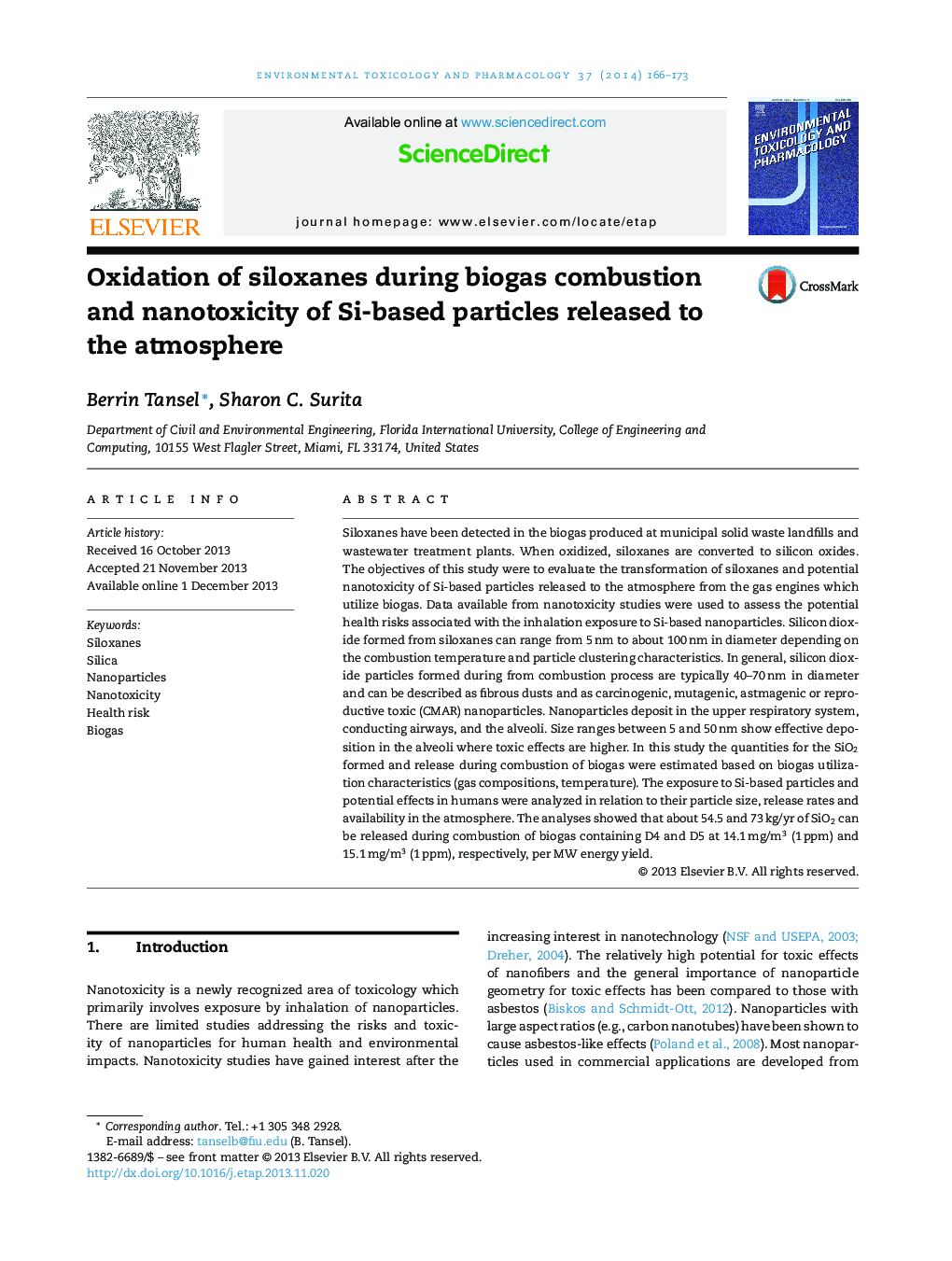| Article ID | Journal | Published Year | Pages | File Type |
|---|---|---|---|---|
| 2583987 | Environmental Toxicology and Pharmacology | 2014 | 8 Pages |
•D4 and D5 constitute the majority of the siloxanes detected in biogas.•When oxidized, siloxanes are converted to silicon oxides.•SiO2 particles formed from combustion range from 5 to about 100 nm in diameter.•About 54.5 kg/yr of SiO2 can be released from D4 at 1 ppm in biogas per MW energy.•About 73 kg/yr of SiO2 can be released from D5 at 1 ppm in biogas per MW energy.
Siloxanes have been detected in the biogas produced at municipal solid waste landfills and wastewater treatment plants. When oxidized, siloxanes are converted to silicon oxides. The objectives of this study were to evaluate the transformation of siloxanes and potential nanotoxicity of Si-based particles released to the atmosphere from the gas engines which utilize biogas. Data available from nanotoxicity studies were used to assess the potential health risks associated with the inhalation exposure to Si-based nanoparticles. Silicon dioxide formed from siloxanes can range from 5 nm to about 100 nm in diameter depending on the combustion temperature and particle clustering characteristics. In general, silicon dioxide particles formed during from combustion process are typically 40–70 nm in diameter and can be described as fibrous dusts and as carcinogenic, mutagenic, astmagenic or reproductive toxic (CMAR) nanoparticles. Nanoparticles deposit in the upper respiratory system, conducting airways, and the alveoli. Size ranges between 5 and 50 nm show effective deposition in the alveoli where toxic effects are higher. In this study the quantities for the SiO2 formed and release during combustion of biogas were estimated based on biogas utilization characteristics (gas compositions, temperature). The exposure to Si-based particles and potential effects in humans were analyzed in relation to their particle size, release rates and availability in the atmosphere. The analyses showed that about 54.5 and 73 kg/yr of SiO2 can be released during combustion of biogas containing D4 and D5 at 14.1 mg/m3 (1 ppm) and 15.1 mg/m3 (1 ppm), respectively, per MW energy yield.
Graphical abstractFigure optionsDownload full-size imageDownload as PowerPoint slide
